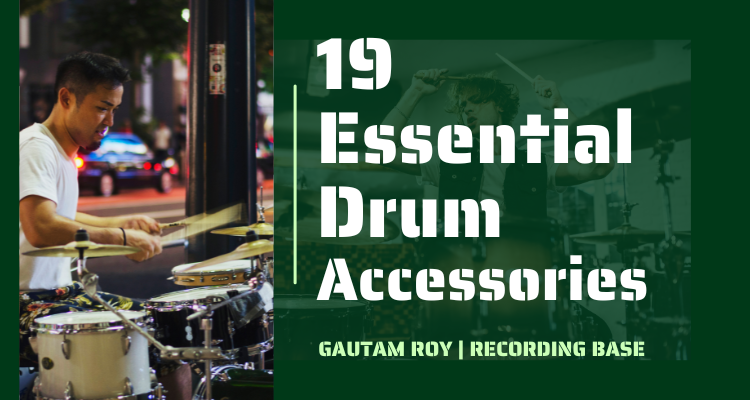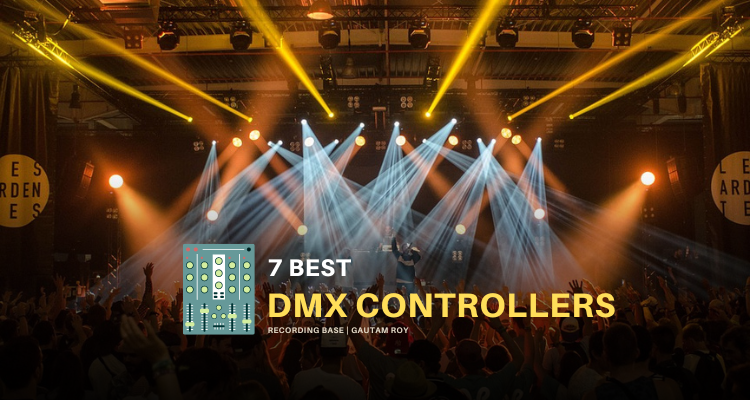In this article, I’m going to share with you my ultimate live sound equipment list. This article will equally help those who are going to purchase live sound equipment or already have and want to upgrade to the right ones.
So, if you are one of those guys, keep on reading.
In this article, I will share with you the 14 essential live sound equipment which you need to properly manage your live performances.
Whether you are organizing seminars or live concerts this list will equally help you as I have made this work with all kinds of live sound applications.
So, read on till the end.
Table of Contents
- 1 Live Sound Equipment List
- 2 1. Microphones
- 3 2. Mixing Board
- 4 3. Effects and Plugins Hardware
- 5 4. Monitors
- 6 5. Power Amplifier
- 7 6. PA Speakers
- 8 7. PA Crossover
- 9 8. Live Mixing DAW
- 10 9. Light Boards (DMX Controllers)
- 11 10. Mixing Desk and Rack Mount
- 12 11. Cables for Sound Equipment
- 13 12. Microphone Stands
- 14 13. Notation Stands
- 15 14. Speaker Stands
- 16 15. Cases and Boxes
- 17 Conclusion
- 18 FAQs
Live Sound Equipment List
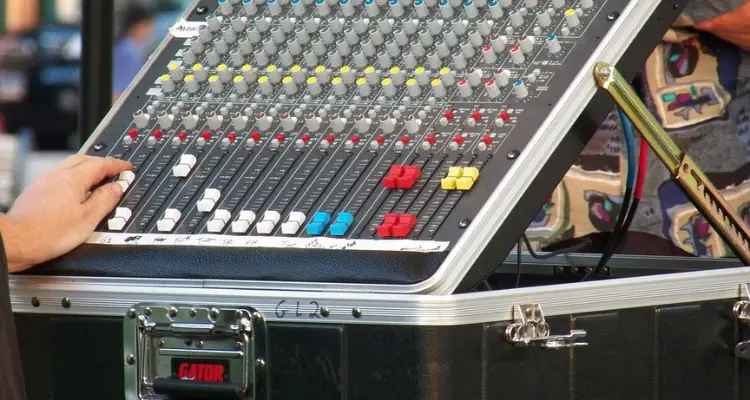
First thing first.
If you are already in the live events market then you know how competitive this market is.
You need to upgrade your skills as well as your equipment to compete with others or you will be pulled out of the cream.
Disclosure: This post may contain affiliate links, which means we may receive a commission if you click a link and purchase something that we recommended. Read more about Affiliate disclosure here.
Well, if you are good at it you can build a big business around it.
There is a lot of scope in live sound management. But without the proper knowledge and guidance, you should not take any steps.
Through Recording Base, I always try to put my own expertise in front of you and help you out to get more about the sound equipment.
So, without wasting any more time, let’s dive into the list.
1. Microphones

For any time of recording setup, whether it’s recording studio or live event setup, the very first equipment you need is “MICROPHONE”.
There are various types of microphones around us for different applications.
Without the proper knowledge of microphones, you would probably choose the wrong one.
Well, I have also written several informative articles on microphones that you should read to get the proper knowledge of mics.
Such as,
- What is Microphone Gain [Complete Guide About Microphone Gain]
- 10 Best Microphone For Vocals and Acoustic Guitar
- Best Bass Guitar Mics in 2024: Ultimate Guide
- Drum Mics 101: Best Drum Mics and Kits, Types, Placements, FAQ
These articles will definitely help you with this.
In the case of live sound, the most popular question is,
Cordless or Wired?
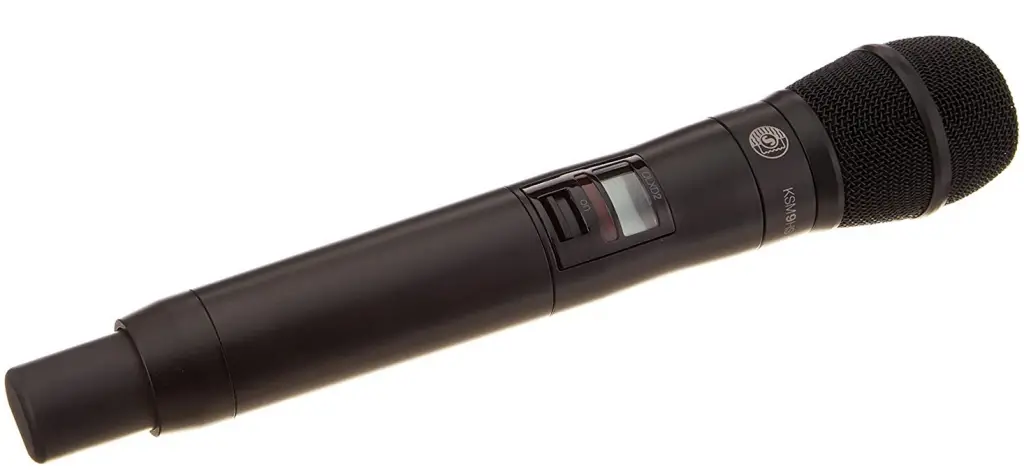
As you know, there are two main types of mics – Cordless and Wired. In studios, we generally use wired mics because we want lossless sound, and also the distance of vocalist is not much like in live events.
But, in live events and concerts, the distance between mixing desks is far much more than in studios sometimes 100s feet.
That’s why Cordless mics are preferred in live events.
Well, you can use wired mics in instruments but for vocals, Cordless mics are best.
Now let me divide the mics according to their applications in live sound.
First off,
Handheld Vocal Mics
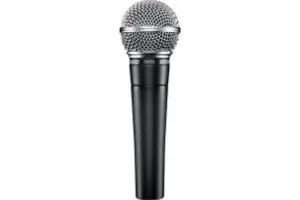
Handheld vocal mics(cordless) are the most common mics used in live sound. These are used by singers, speakers, etc.
There are several cordless vocal mics in the market. But I personally like and recommend Shure BLX wireless mic systems.
You can also look for cheaper alternatives on Amazon.
Podium Mics
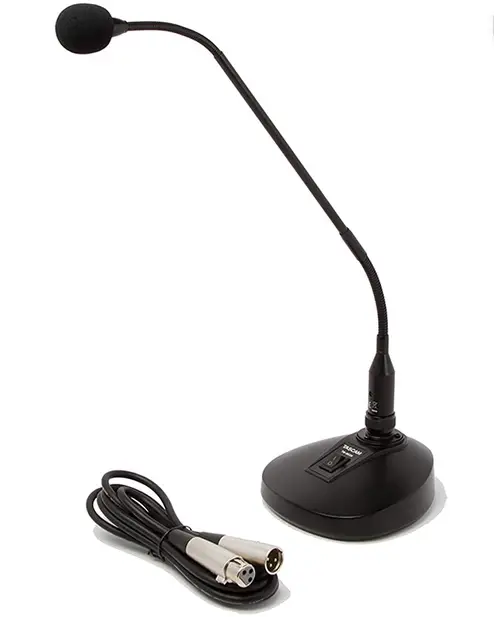
Podium mics are used by the speakers and are essential if you are into live event management.
Just like handheld vocal mics, there are a lot of choices in podium mics. Well, I recommend Shure MX418D/C podium mic.
Lavalier Mics
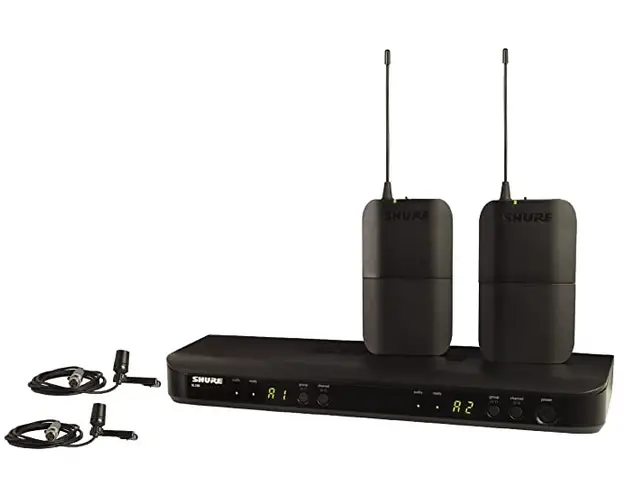
Lavalier mics are used by live performers, singers, and speakers. It is a set of tiny mic, a body pack (transmitter), and a receiver.
The mic can be held on the ear like earphones so the hands are free which makes the performer more comfortable to the audience.
I have written a whole article on lavalier microphones that you should read to choose the best one for your needs.
Instrument Mics
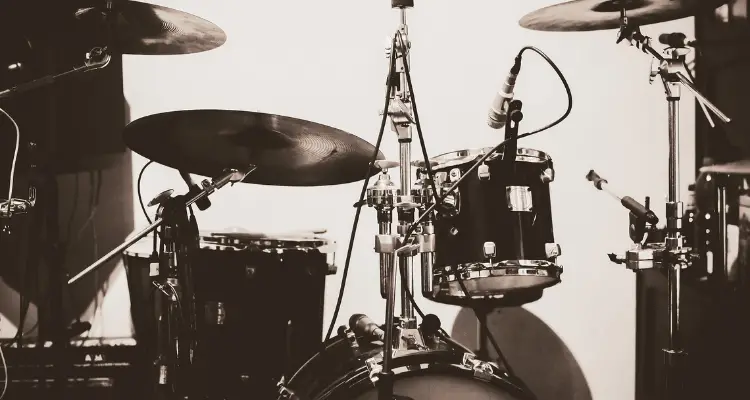
Instruments mics are used to capture various musical instruments such as drums, acoustic guitars, violins, pianos,s, etc.
For drums, I have a guide for you that will help you to choose the best mic for your needs.
For violins, guitars, etc you can use Shure Shure BETA98H. On piano, you can use vocal wireless mics.
Wireless Microphone System
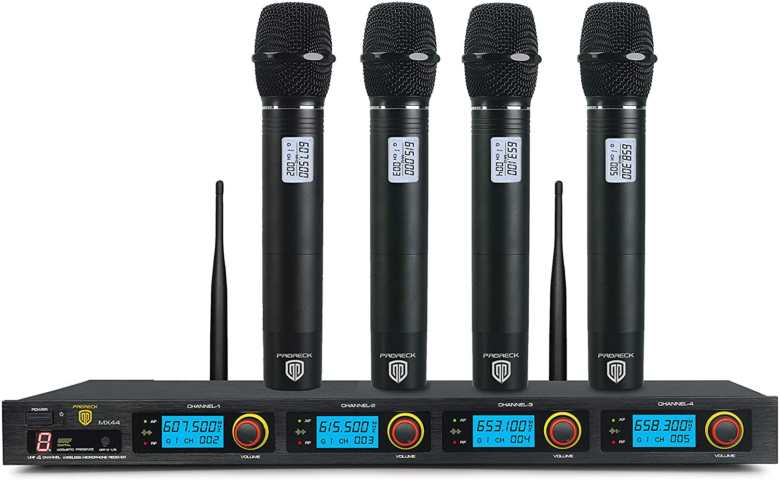
Well, choosing the mics separately is overwhelming, especially for those who are not familiar with different types of mics.
So, it’s a wise decision to go for a whole wireless mic system. This system has all types of wireless mics along with transmitters, receivers, etc.
Wireless systems such as Shure ULX-D has all the essential miking system required in a live sound setup.
You can read further about Shure wireless mic systems on their official site.
Note: If you want a complete wireless miking solution then I would recommend going for a “wireless mic system” rather than individual mics.
2. Mixing Board
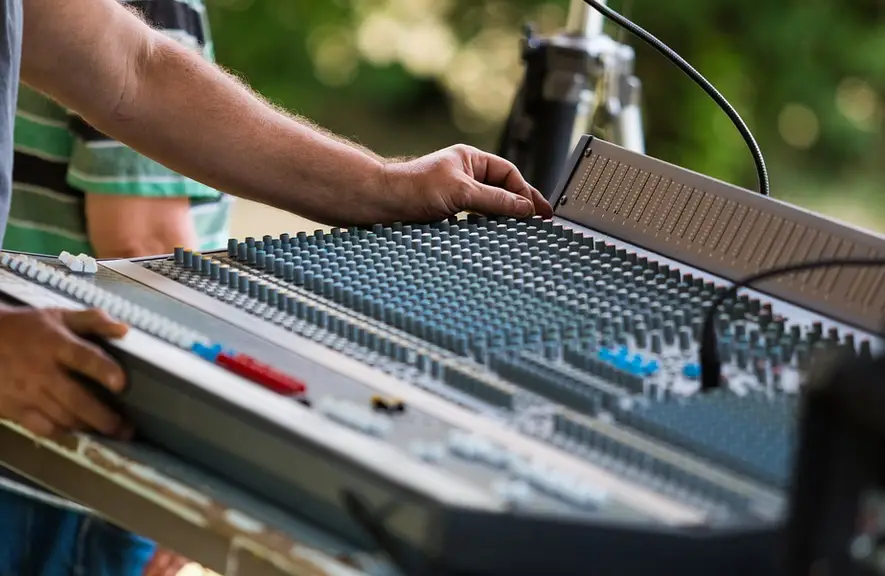
the second most essential equipment in live sound setup is the mixing board. It processes all the sounds that why we can call it the heart of a sound system.
Well, choosing a mixing board for live sound is really tough. There are several choices out there.
You can choose an ANALOG MIXING CONSOLE or a DIGITAL MIXING CONSOLE. You should also check if it has enough inputs and outputs to process mics, instruments, etc.
Also, you should think about the effects before choosing the mixing board. Some mixing boards come with built-in DSP effects such as reverb, delay, compressor, and EQ.
Well, if you want to buy the effects separately then I don’t recommend you spend more on onboard effects. Rather you can buy separate ones. I have covered the effects in the next section.
SO, the big question is, should you go for ANALOG or DIGITAL?
I recommend analog mixing consoles “IF YOU ARE A NEWBIE”. However, if you are an experienced one then you can with digital boards.
Now come to the inputs.
Well, the more inputs you have, it’s better.
After all, you have to allocate all the inputs to your board.
Ask yourself, are you going to organize a big concert full of mics and other inputs? If yes then you need the bigger mixing board. Maybe 64 channels?
Well, most of the live programs don’t need that many inputs so a 32-channel mixing board is an ideal choice for medium-size concerts.
Okay, now ask one more question. Do you need separate effects? Well, separate effects allow you to produce great sounds but also need much more expertise.
So, it’s your choice which type of mixing board you need. I have two recommendations for you on this.
- Yamaha MGP32X (With Effects)
- Soundcraft GB4 32-Channel Mixer Console (Without effects)
3. Effects and Plugins Hardware
Effects are essential thing for audio recording and live sound. We need different types of effects for different purposes.
Such as for adding depth to the voice we need to add some amount of delay and reverb as well as compress the vocal to get the low sounds on front.
As well as equalizing the audio is also important to deliver good sound.
These are some of the reasons why we need effects-rack in a live sound setup.
Well, here one thing is to notice, we CAN use software effect plugins in recording studios but for live sound hardware effects are recommended.
There are following reasons to use hardware effect plugins in live sounds, such as
- Hardware effects are easy to use.
- They don’t produce buffer which is a common problem in DAW plugins, even in fast computers.
- You need a separate audio interface to connect your hardware with the effects.
SO, it’s good to go with hardware effects.
You could ask me if you have onboard effects in your mixer then why should you buy separate ones?
Well, it depends on your needs, you can use onboard effects but they are so basic effects, such as you will get only a 3-channel equalizer in an analog mixer board but in dedicated equalizer hardware you will get 31 bands.
SO, the first thing is to prioritize your needs.
WELL, now which type of effect plugins do you need for live sound?
Let me cover.
Equalizer
First off,
Equalizer, which is the most common effect plugin used by live sound engineers. You can buy a multiband equalizer to fine-tune your audio.
Equalizer plugins such as DBX Dual Channel 31-Band Equalizer and ART EQ355 Dual Channel 31-Band Equalizer are great choices for a live sound engineer.

Reverb and Delay Effects

the next one is the reverb effect plugin. The reverb plugin is used on the vocals to give more depth and produce ambient voice.
You can buy Lexicon PCM92 2-channel Digital Reverb and Effects Processor.
Compressor/Limiter
For the compressor and limiter signal processor, I recommend DBX 266xs Professional Audio Compressor/Gate Dynamic Processor which is easy to use and set an forget setup type compressor limiter effect.

You can use it on the master channel as well as on vocals to compress and limit the sound.
Note: If you don’t compress the sound, the higher intensity of kicks can damage your PA system. That’s why I always recommend using a good compressor and limiter on the master output.
Chorus
Chorus effect is optional because there is not much use of the chorus in live sound. Well, if you want to buy one then I recommend – Klark Teknik BBD-320 Signal Processor

Autotune
Last but not the least, Autotune is one of the most common effects on in recording studios as well as on live sound setups.
Well, you can buy one like “Tascam TA-1VP Rackmount Vocal Producer Processor With Antares Autotune” for this purpose.

Actually, autotune comes in a software version so if you want to use it on live sound then you need a laptop with DAW (which I have described later in this article) along with a fast-acting audio interface.
Because we don’t like a buffer between the singer’s voice and the sound processed through the system.
Well, it’s okay if you don’t have Autotune in the live sound setup.
Let me know in the comments which technique are you using to use Autotune in live sound.
4. Monitors
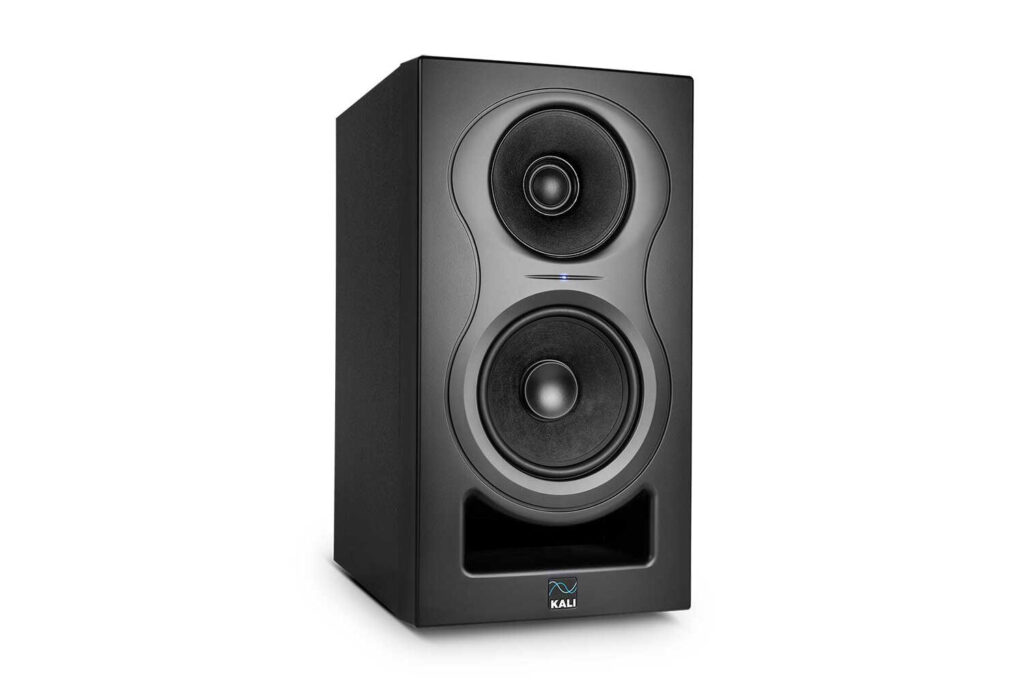
Monitors are essential for monitoring the sound in live shows. BUT, you can use headphones for better sound monitoring and mixing in that crowded environment.
Well, some people suggest monitor speakers but I don’t recommend them as in the crowded environment you can’t perfectly mix through open speakers.
That’s why I recommend isolated headphones like Audio-Technica ATH-M50X which I have already reviewed in Recording Base.
5. Power Amplifier
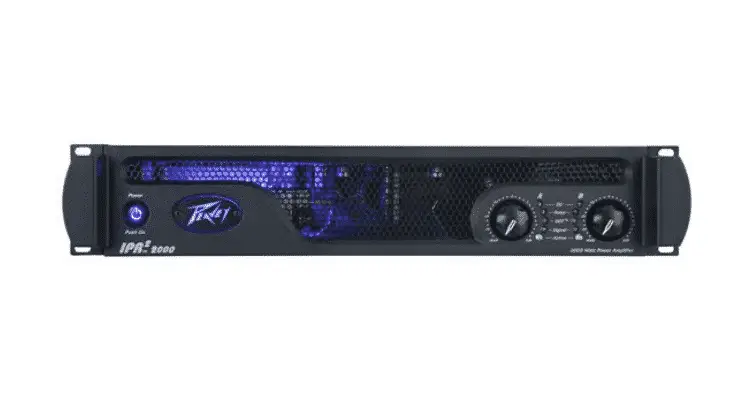
A power amplifier is one of the most important pieces of equipment in a live sound setup.
Power amplifiers are the backbone of your sound system because these giants boost your sound to the PA level.
BUT, without proper knowledge of wattages and sound distribution systems, you can choose the wrong amp which can damage your PA speakers.
That’s why I have compiled the list of the best power amps for live sound and some basic information about them to choose the right one for you.
You should read that article to know the essential information about choosing power amps for live sound.
6. PA Speakers
The second most important piece of equipment for a live sound setup is a PA system or speakers.
Basically, these PA speakers are passive-type speakers which get power from the power amplifiers that I have already described above.
According to the placement, there are four types of speakers used in a PA system.
Front speakers, side speakers, subwoofers, and stage feedback speakers. Another popular type of PA system is called the line array system which I will describe later in this section.
First off,
Front Speakers
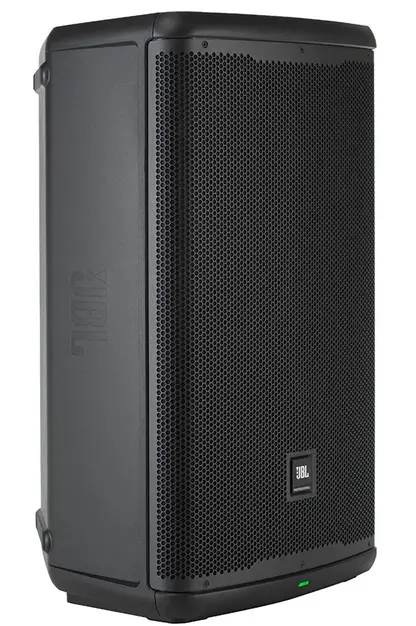
Front speakers are the high-wattage passive speakers used in front of the audience. These are used in L-R pair. You can adjust the number of speakers as per the wattage of your main power amp.
If you are using a 5000-watt amp as your main power amp then you should use at least 2500 watts speakers.
Note: You should always use equal wattage on both sides (left and right). Otherwise, the final sound will be unbalanced. The wattage of PA speakers should be lower than the power amp otherwise you will start getting distortion.
Side Speakers
Side speakers are used to equalize the sound in the audience queue. Equalizing the sound is essential otherwise the back-side audience will not get the sound properly.
Generally, the same or lower-wattage speakers are used for this purpose. You should use side speakers on both sides(L-R) of the audience and every 20 meters of distance.
For both front and side speakers, you can check out Amazon or Sweetwater. There are tons of choices out there.
But I personally like JBL Eon speakers.
Subwoofer
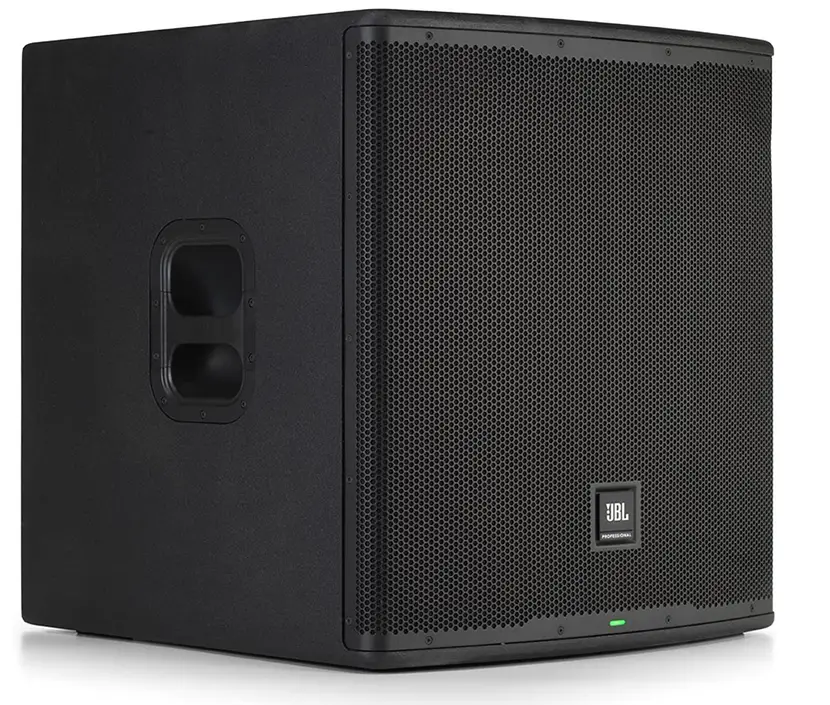
Subwoofers are used to distribute low-frequency sounds below 200 Hz. These are generally used on the front side of the audience, just below the main speakers.
Stage Feedback Speakers
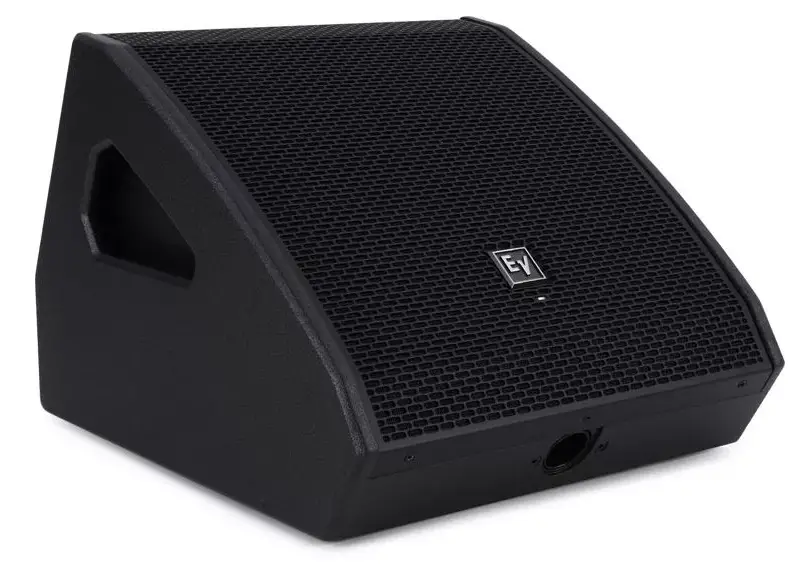
Another essential live sound equipment is stage feedback speakers. These speakers are used to provide feedback sound to the artists and performers.
Because the main PA systems’ face is towards the audience so artists don’t get the proper feedback. So these feedback speakers are used to help them out.
Line Array System
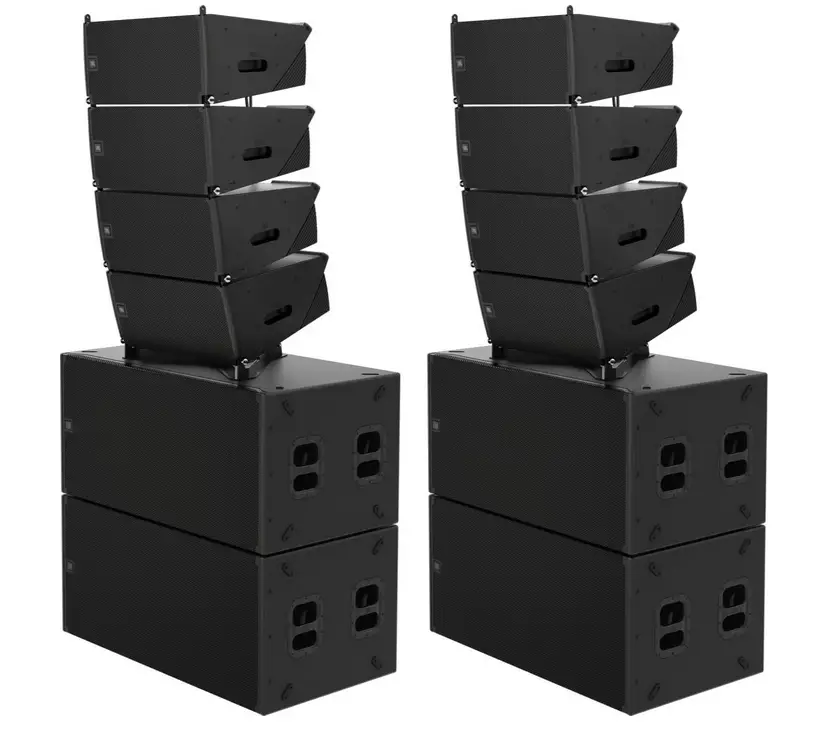
Today line array systems are largely used in live sound. The main benefit of a line array system is the sound is limited to the audience and the outer environment will not get affected due by the heavy sound.
Line array systems are designed to focus the sound waves only toward the audience.
BUT, they are costly.
In line array systems a series of equal-wattage speakers are used at a particular angle to provide the necessary sound amplification.
These are really amazing systems that you can add to your live sound setup.
7. PA Crossover
Crossovers are used to split the frequencies into different parts to channel the right frequency to the right speakers.
For example, if you are using a subwoofer and main speakers in the same amplifier then you need to distribute the frequencies higher than 200 Hz to the main speakers and the low frequencies to the subwoofer.

A crossover makes it possible by frequency distribution.
The benefit of using a crossover is your speakers will not get damaged due to high-intensity sound.
So I recommend using a crossover in a live sound setup.
You can buy, DBX 223XS crossover or Behringer Super-X Pro CX2310 V2 Multi-channel Crossover.
8. Live Mixing DAW
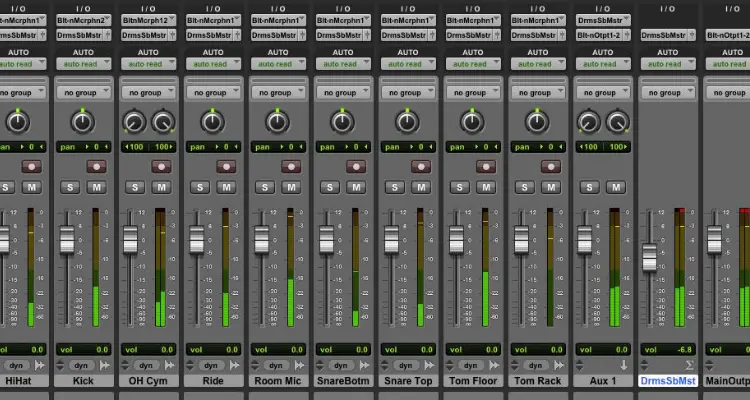
DAW is not essential for live sound but you can use it optionally to mix more accurately.
You can choose one of the DAWs from these ones.
If you use a DAW in live sound mixing then you need other two pieces of equipment – an audio interface and a laptop to operate your DAW.
One of the greatest benefits of using DAWs in live sound is you can use software-based plugins such as Autotune through your DAW. You can also use reverbs, delays etc through your DAW.
Note: Make sure your audio interface has a good buffer size to maintain the delay between live sound and processed sound otherwise it could ruin the sound.
9. Light Boards (DMX Controllers)
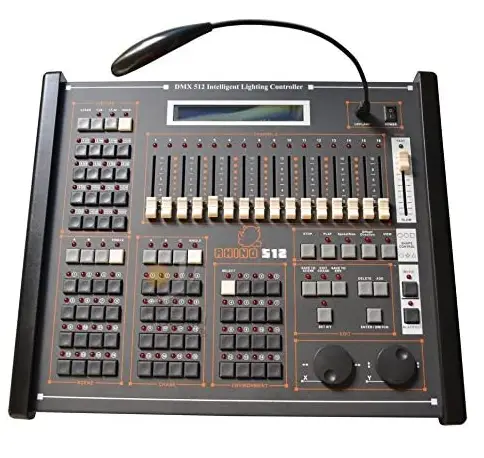
I’m not sure if this is a part of the live sound setup or not BUT, I have seen several live sound engineers also operating the light systems.
If this applies in your case then you need light boards to operate the lights syncing to the sound.
In live concerts, light boards are essential. They are used to create light effects synched with the sound hence needed.
Well, I have written an article on the 9 best light boards that will definitely help you to choose the best ones.
10. Mixing Desk and Rack Mount
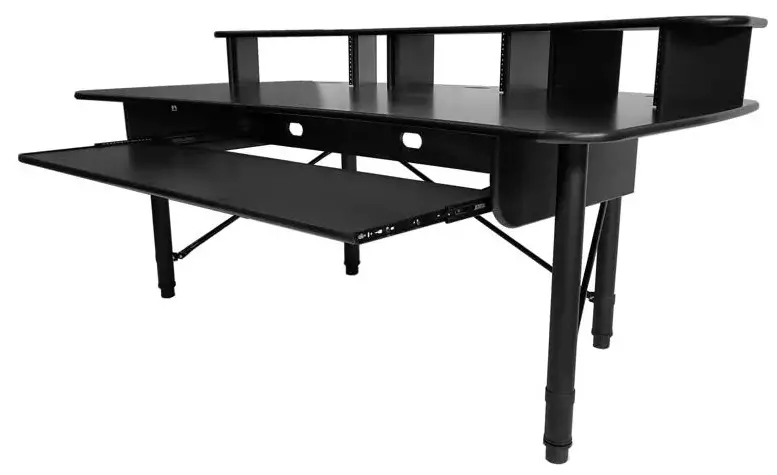
Now, come to the furniture you need to put your equipment on.
In live sound, a foldable metal mixing desk is used to put the mixing console and rack mounts are used to put the amps, crossovers, effects, etc.
These are detachable metal furniture so you can attach and detach them as per your need.
You can find the suitable rack mount and mixing desk on Amazon as well as Sweetwater.
Just keep in mind that you choose the right size of them. You can refer to the product description to see the equipment height, width, and depth to choose the right accessories.
11. Cables for Sound Equipment
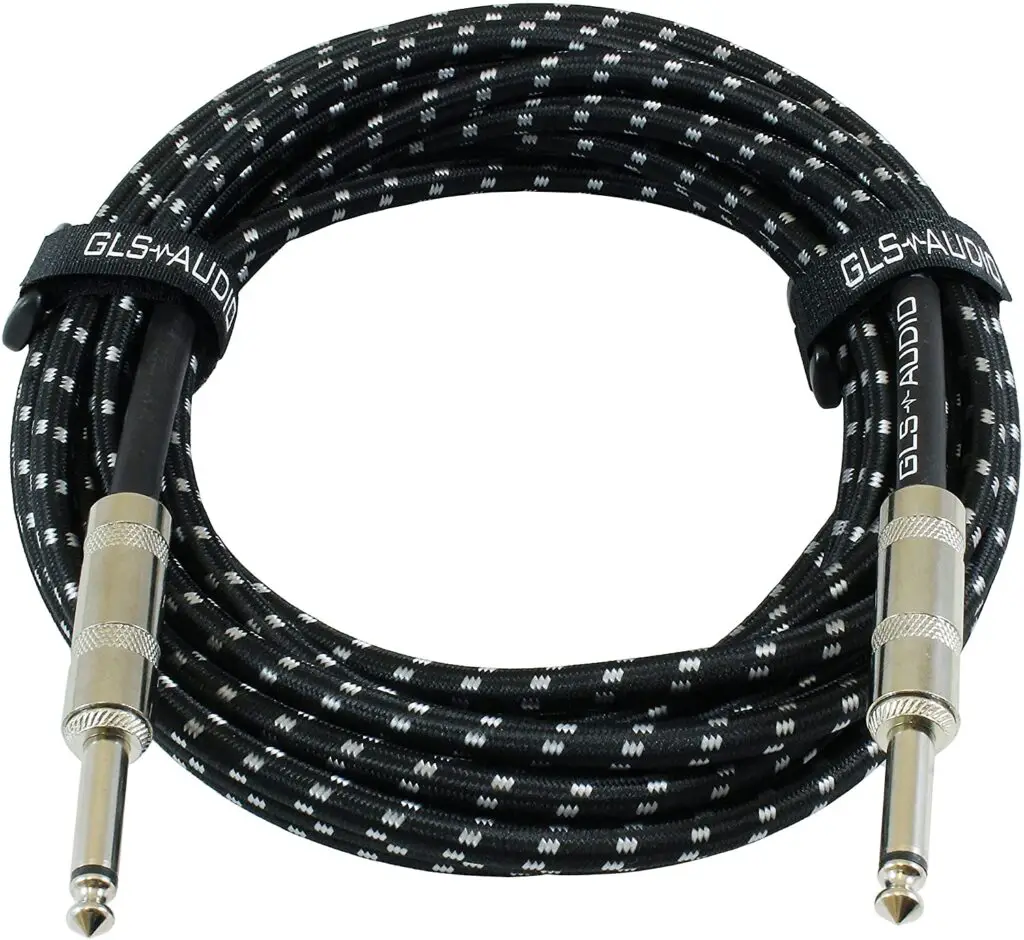
When it comes to “AUDIO” there are several types of cables used. In live sound, you need the following cable types.
- XLR cables for mics
- TRS 1/4″ cables for instruments, effects and speakers
- Power cables
- USB cables
You have to calculate the number of cables as per your requirements and then buy or manually build the cables.
However, I recommend buying professional cables because they are low-noise cables. Manually built cables can make noise.
I have written an article on monitor cables that can help you out with this.
12. Microphone Stands
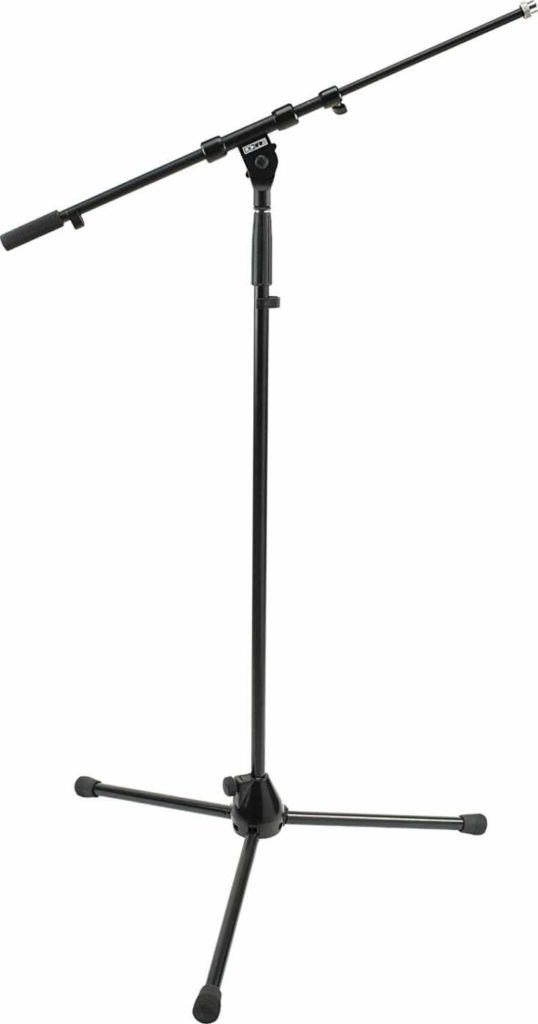
Microphone stands are essential for live sound setup. You need different types and sizes of microphone stands.
Such as full-height mic stands for singers, small-size mic stands for instruments and clip-on mic stands for instruments like drums.
So, make sure to write your needs on a piece of paper and then buy them.
13. Notation Stands
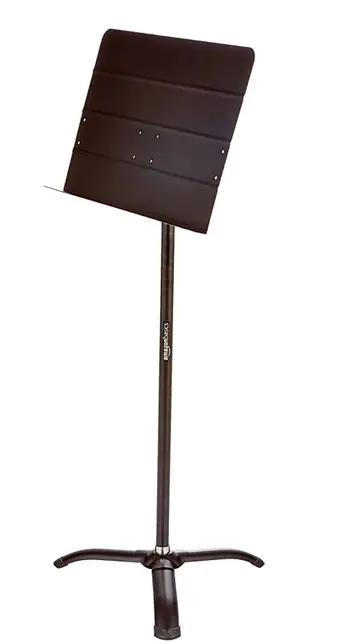
Notation stands are used to read notations and lyrics during the live show. Mostly singers and instrument players use these stands.
So, you should have a couple of notation stand on hand to use during live shows.
14. Speaker Stands
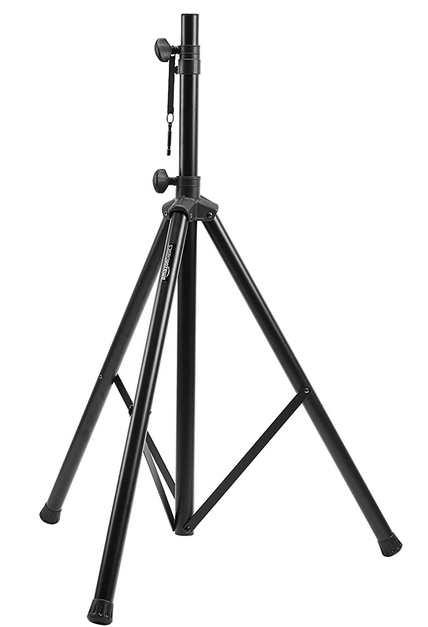
Speaker stands are also very important. They are used to maintain the speaker at a particular height.
However, in a line array system, you have to fix the speakers on hanging stands which come separately according to the size of the speakers.
So, you should choose them as per your needs.
If you have a line array system then you need a hanging frame and if you have normal speakers then you need simple speaker stands.
The choice depends upon your needs.
15. Cases and Boxes
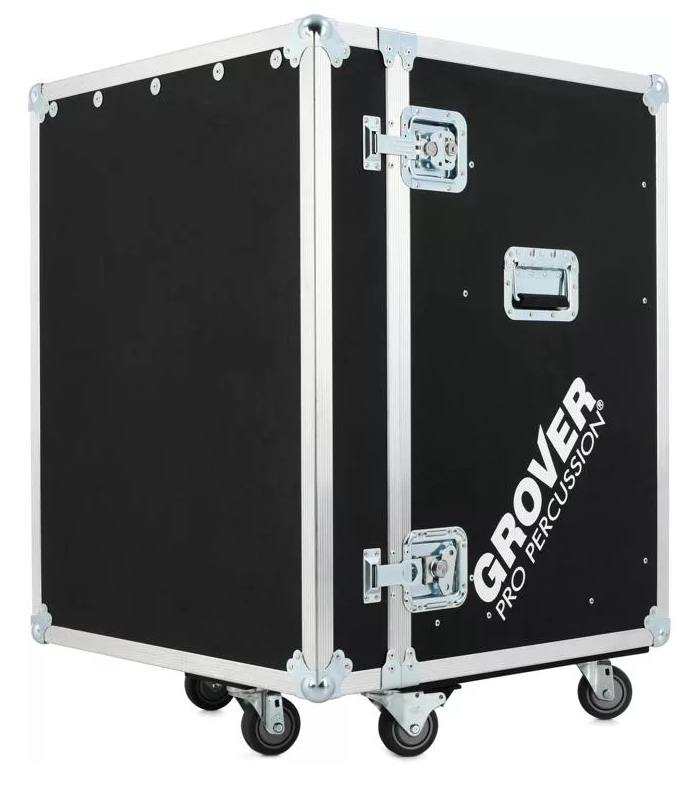
Last but not least cases and boxes are very important in live sound setup. They provide safety to the equipment from dust, water, etc.
As with every event, the location is changed so you need cases and boxes to safely transport the equipment.
Sound equipment is very sensitive so it should be handled safely and cases and boxes allow you to keep them safe.
You can search on Amazon for cases and boxes for your sound equipment.
Conclusion
Above I have introduced you to the live sound equipment list that I use in live events.
Live sound setup is not as hard as people think. If you have the proper knowledge and a guide to set up you can choose the right equipment.
I hope this article has guided you on this.
If you have any questions or suggestions, let me know in the comments.
FAQs
What is a live sound system?
A live sound system is a public address system used to amplify sound in live concerts, events, etc.
What are the main equipment of a sound system?
Microphone (wired and/or wireless), mixer, power amplifier, loudspeaker, cables etc.
Do I need a mixer to perform live?
Yes, you need a mixer to mix and route the different sounds through the main output.

![Top 9 Best Amps for Blues [2024]](https://www.recordingbase.com/wp-content/uploads/2023/12/best-amps-for-blues.png)
![9 Best Digital Mixers For Church [2024]](https://www.recordingbase.com/wp-content/uploads/2023/07/Best-Digital-Mixers-For-Church.png)
